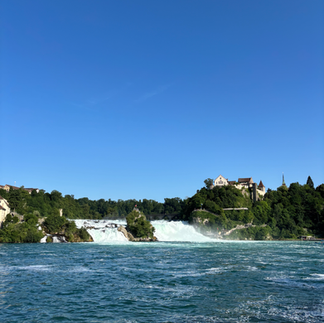Two Weeks at STF Zurich: A NIFT Student’s Perspective
- desizn circle International

- Sep 14
- 2 min read
Written by Kavya Bansal, Textile Design, NIFT Delhi
June 10–20, 2025, Swiss Textile College (STF), Zürich
Why I Went ?
Fresh out of my second-year exams, I boarded my first independent study trip, two immersive weeks at STF through a NIFT exchange. Fifteen students from different NIFT campuses, new mentors, a new city, and a chance to see how the global textile ecosystem actually works: that was the promise, and it delivered.
This was more than a course; it was a front-row seat to where craft, technology, and markets meet.

Inside the Program
STF’s curriculum is packed with breadth and depth. We began with an orientation by Ms. Simon Babs (our anchor throughout) and Prof. Christian Gärtner, followed by sessions from a multidisciplinary faculty, including Ms. Andrea-Monika, Ms. Romana Basler, Ms. Sandra Gysin, Ms. Rosi Schnetz, Ms. Nicole Ungureit, Mr. Pascal Düringer, and Ms. Jyoti Kapur.
What we covered (highlights):
Global trend analysis, retail marketing, and visual merchandising
Luxury collection development and innovative sales solutions
Mass customization and consumer experience
3D body scanning, inkjet printing, CAD-based pattern making
Prototyping workflows and technical textiles
Every session paired concepts with hands-on demos—seeing machinery, testing workflows, and translating design ideas into viable product directions.
Learning by Looking: Industry Visits
Between classes, curated field visits gave us context across luxury, sustainability, and standards: Bongenie (luxury retail), QWSTION (sustainable materials and design), TESTEX (quality/standards), and Säntis Textiles (innovation).
Seeing back-of-house operations—merchandising strategy, product development, testing protocols, and material decisions—reframed classroom learning into real market practice.
The Capstone: India × Switzerland
For the final jury, we analyzed the Swiss market (women’s outerwear or a sustainability-led product) and paired it with an Indian craft. I chose Rajasthani block printing and presented:“The Swiss Market and the Indian Traditional Technique of Block Print: An Amalgamation.”
The concept: use traditional block-printed surfaces for minimalist, cold-weather-friendly outerwear accents—clean silhouettes, muted palettes, and durable finishes—aligning Indian craft authenticity with Swiss preferences for functionality, quality, and understated luxury.
Campus & City Rhythm
Zürich made learning easy and living easier. Trams every couple of minutes, reliable trains for longer hops, and Co-op grocery stores seemingly everywhere. Evenings meant quick explorations—Bahnhofstrasse for window-shopping luxury, Old Town for ambience, and Lindt Home of Chocolate for the sweetest detour.
What I Took Back
Technical skills: 3D body scanning, inkjet workflows, CAD patterning, rapid prototyping.
Market sense: How luxury, sustainability, and retail storytelling intersect.
Systems view: Standards, testing, and supply-chain realities behind “good design.”
Design maturity: Translating craft to context; making products market-ready.
Personal growth: Navigating a new city, collaborating cross-campus, building friendships that feel like future co-founders.
Farewell & Gratitude
STF closed the program with a heart-warming farewell that distilled two weeks of learning into one word: belonging. I’m grateful to NIFT and STF Zürich—for mentors who taught generously, classmates who became friends, and a city that made discovery feel routine.
This journey widened my design lens. It also strengthened my conviction that Indian craft—presented with intention and technical rigor—belongs on the most discerning global shelves.



















































Comments